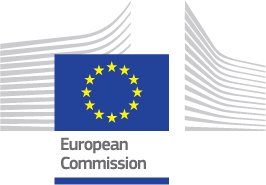After four years the EU’s flagship electromobility project Green eMotion has come to an successful end in February 2015. The project has defined and demonstrated a European framework that connects all electromobility stakeholders for a seamless, cost-efficient, and interoperable electromobility ecosystem.
Starting in 2011, the project developed prototypes to connect the islands of electromobility existing at the time. The projects defined an overarching ICT architecture and standards, especially for ICT interfaces, and analysed new business models for a charging infrastructure that included electric grid connexions. Within ten demo regions and two replication regions, Green eMotion demonstrated that the project findings work in real life and are also supporting the setup of an electromobility environment from the scratch. The project key results got presented at the 3rd EU Electromobility Stakeholder Forum and at the European Economic and Social Committee during a special event for public deciders and socio-economic actors.
“Only by bringing together the common experience of the 42 partners – industrial companies and automobile manufacturers, utilities, municipalities, universities, and technology & research institutions – the excellent results of Green eMotion could be achieved. To define and implement an interoperable electromobility system, the cooperation of all electromobility stakeholder groups was necessary. I have to thank all the partners for the really great teamwork in our project”, said Heike Barlag from Siemens, the project coordinator of Green eMotion.
To allow convenient traffic with electric vehicles (EV) throughout Europe, a standardised, interoperable electromobility system is required, creating new business cases and making investments future-proof. Green eMotion has defined the European ICT architecture that is needed to ensure a proper connection of all market participants. It will allow open and convenient access by EV drivers to a charging infrastructure. The ICT systems of all participating companies are networked by means of a so-called marketplace. While users get easy access to a charging infrastructure independent of the equipment operator, service providers can offer their services to all market participants. In addition, value-added services like reserving a charging point, or easy payment systems can make e-driving a more convenient experience.
A major result of the Green eMotion project: While economies of scale must substantially lower the price of batteries in the coming years, charging points accessible to the public can only be profitable, if highly frequented and combined with other services. Costs for grid integration of charging infrastructure can be significantly reduced using smart charging strategies to control the charging time and power. Smart EV charging management can also optimise the integration of variable power from renewable such as solar and wind by aggregating and controlling the power demand for so-called load areas.
To enable a mass roll-out of electromobility in Europe, social acceptance is a prerequisite. Social profitability of electromobility in regards to the actual benefits and costs may be reached soon. A clear commitment of all levels of policymakers together with industries and services, committed to a consumer friendly electromobility will allow it to happen. All measures should be aligned with the needs of target groups like commuters or owners of fleets to achieve a maximum impact with the lowest possible costs.
Since defining Europe-wide standards for electromobility was a primary objective of the project, the test of their practical usability was a major goal for Green eMotion. In the Green eMotion demonstrations all twelve demo regions were connected to the marketplace and the feasibility of this solution, especially for roaming between all the demo regions, was successfully demonstrated. Due to the multitude of local electromobility projects the awareness and experience of the customers was increased. Feedback on solutions for enhancement of driver’s convenience, such as easy location or easy access to suitable charging stations, was very positive. Technical issues like integration of renewable energy sources and power quality aspects were analysed under real-life conditions. The standards developed and tested by Green eMotion have become de facto standards for electromobility in Europe.
Details of the project results can be found on the Green eMotion project website www.greenemotion-project.eu in the Dissemination section.
About Green eMotion: The project’s 42 partners have joined forces to explore the basic conditions that are needed for Europe-wide electromobility. The primary goal of the project was to demonstrate an interoperable electromobility system with easy access to charging infrastructure all over Europe. Such a system is only feasible with standards that can be adopted internationally. To this end, practical research is being conducted in different demonstration regions all over Europe with the aim of developing and demonstrating a commonly accepted and user-friendly framework that combines interoperable and scalable technical solutions with a sustainable business platform. The project is funded by the EU and runs until February 2015. More information is available at: www.greenemotion-project.eu
 |



